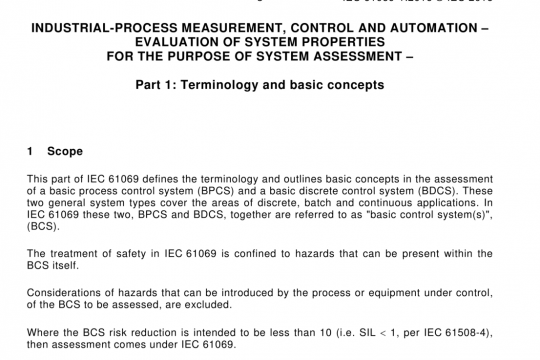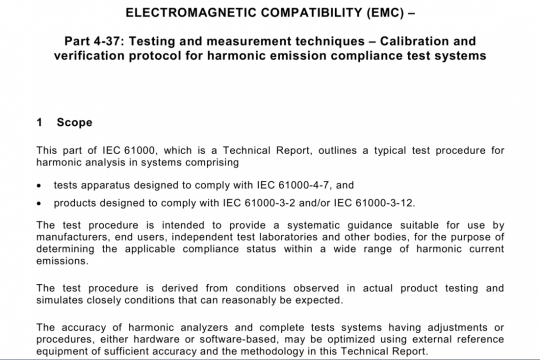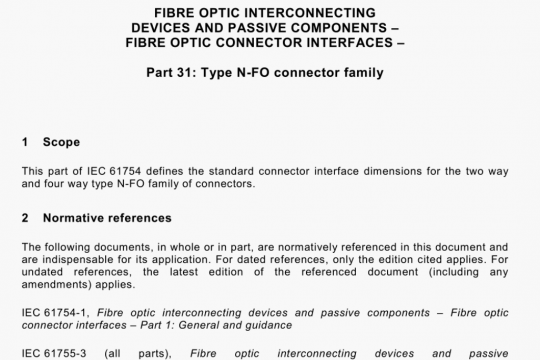IEC 60904-7 pdf free download
IEC 60904-7 pdf free download.Photovoltaic devices – Part 7: Computation of the spectral mismatch correction for measurements of photovoltaic devices.
A correction is not necessary if either the test spectrum is identical to the reference spectrum (see IEC 60904-3) or if the device under test’s relative spectral responsivity is identical to the reference device relative spectral responsivity. In this case, the reading as obtained from the reference device specifies which irradiance at the reference spectrum will generate the same short-circuit current in the device under test as the test spectrum. If there is a mismatch between spectra (spectrum mismatch) as well as spectral responsivities (spectral responsivity mismatch) then a mismatch correction should be calculated. As the test spectrum and the spectral responsivities always have an assigned measurement uncertainty, for the calculation of the total uncertainty the uncertainty of spectral mismatch shall be always taken into account. When a mismatch in spectra and/or spectral responsivities exists, the reading of the reference device (see IEC 60904-2) does not give the irradiance of the test spectrum that would generate the same short-circuit current for the device under test as the reference spectrum. Therefore, one shall determine the effective irradiance of the test spectrum, Egff that generates the same short-circuit current in the device under test as generated by the reference spectrum.
All integrals shall be performed in the entire spectral range where the respective quantities are not zero. The irradiance distribution shall be known over the entire combined spectral range of sensitivity of the device under test and the reference PV device.
The spectral irradiance distributions and the spectral responsivities can be given on an absolute or relative scale.
If the relative test spectrum would be identical to relative reference spectrum, then the SMM is 1 and spectral mismatch corrections can be neglected, even if the spectral responsivities of the devices differ. However, considering that the test spectrum as a physical quantity has a measurement uncertainty assigned to it that is not zero, the S1.t! will still have a measurement uncertainty contribution different to zero. Thus, the S.1M factor cannot be neglected when considering its measurement uncertainty contribution, though the value of the factor is 1.
If the relative spectral responsivity of the device under test would be identical to the relative spectral responsivity of the reference device, then the SiRf is 1, even if the relative spectral irradiance distributions differ (perfectly matched reference device). Considering that both spectral responsivities have a measurement uncertainty that is not zero, the SMA! will still have a measurement uncertainty contribution different to zero. Thus, the SA1M factor cannot be neglected when considering its measurement uncertainty contribution, though the value of the factor is 1.
Due to the irregular shape of the reference and measured spectra, spectral responsivities should be interpolated to the wavelength points of the spectral irradiance measurements, not vice versa.
Formula (3) is valid for single-junction devices, but may be used for multi-junction devices. For multi-junction devices, the calculation shall be performed for each junction in the device, using its spectral responsivity including the spectral filtering caused by the junctions above the junction under consideration. The test report should specify the spectral mismatch factors and the relative current generation of the individual junctions. For multi-junction devices, refer to IEC 60904-1-1 (l-V) and IEC 60904-8-1 (SR).IEC 60904-7 pdf download.




